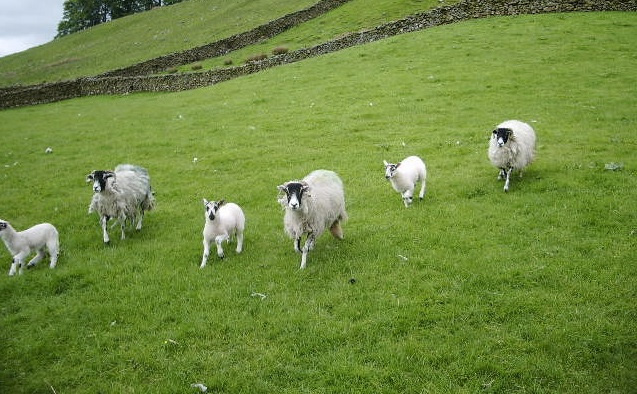
As famers welcome the warm weather, many will be breathing a sigh of relief as their worry about sheep scab subsides. However, with a significant number of cases of scab seen during the summer, farmers need to stay alert to the possibility of the disease all year round and not presume their farm safe from scab prematurely.
Once considered predominantly a winter problem, the seasonal pattern of sheep scab is changing and the disease is being seen increasingly at other points in the year, with its summer control proving far from straightforward.
Caused by the non-burrowing mite, Psoroptes ovis, the disease can affect any age of sheep and even apparently healthy sheep can harbor the mites and act as a source of infection. During the warmer months mites may remain active or they can lay dormant on the sheep in ‘cryptic’ areas, such as the ears or under the tailhead.
Unfortunately, ‘dormant’ doesn’t mean ‘harmless’ as these hidden mites remain highly contagious to other sheep without causing obvious signs of disease. When the temperature drops, the mites then reactivate and can cause an outbreak of sheep scab.
This means that summer disease is often hard to spot - no dramatic wool loss or severe itching to be seen but healthy-looking sheep that continue to spread the disease. Once introduced into a flock, scab rapidly spreads between sheep and is extremely difficult to eradicate. With reduced growth and production, poor reproductive performance of ewes and rams, increased numbers of culled sheep and death of severe cases as just some of the costly consequences, it’s easy to see why farmers can’t afford to sit back and relax over the summer and risk sheep scab surfacing.
It was the removal of the compulsory summer dip in 1989 which saw cases of the disease rise dramatically after having reached near eradication in 1988 – a status which has not been achieved in this country since.
Sheep scab is now a notifiable disease in Scotland but there is currently no legislation requiring routine treatment or reporting of the disease in the UK,which means it is up to farmers to take the initiative when it comes to protecting their flocks.
Biosecurity is also at the core of good sheep scab prevention due to the highly contagious nature of the critters in question. While every flock has its expert escape artist, repair of broken fences and maintaining secure segregation of sheep has to be a priority for farmers facing up to scab.
Summer sales and bought-in sheep pose specific risks and a three week quarantine following treatment should be applied to all incoming stock. Thorough disinfection of all shared equipment, housing and transport vehicles are also a must for farmers who want to make sure mites don’t run amok in their flock.
So, while summer signals a slightly less stressful time for some, sheep farmers must not be lured into a false sense of security and should stay savvy when it comes to scab.
